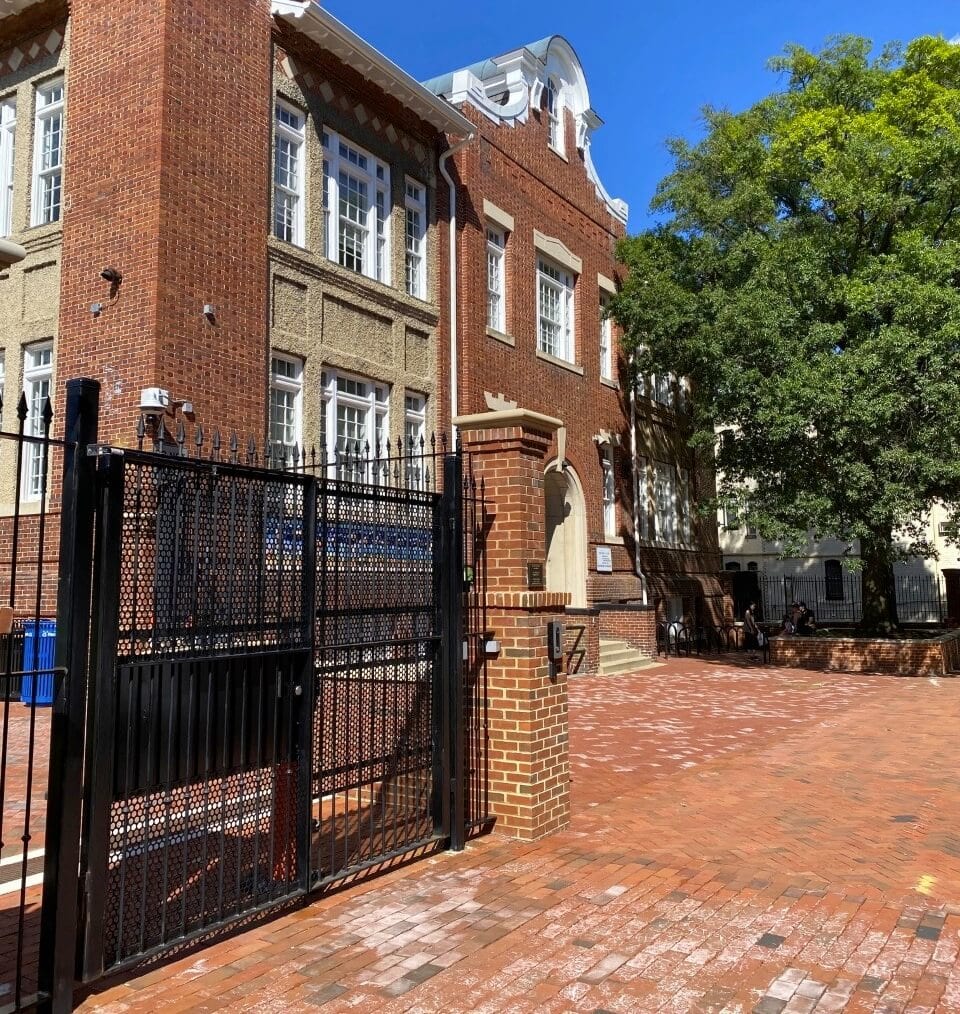Cautious Reopening Continues at Hyde-Addison and Hardy
By • February 15, 2021 0 886

Georgetown public schools Hyde-Addison Elementary School and Hardy Middle School opened their doors on Feb. 2 – partially – to some students for in-person learning.
“Overall, 70 students are learning in person at Hyde-Addison Elementary in Term 3,” officials at DC Public Schools told The Georgetowner on Feb. 12. “At Hardy, 135 students are learning in person.”
“Hyde-Addison classes were to be limited to between eight and 11 students per grade,” one mother told The Georgetowner on Feb 1.
“All students are Hyde-Addison,” said Danyelle Kent-Robinson, the school’s assistant for strategy and logistics, on Feb. 8, the start of week two. But she could not say how many there were nor if there was a seat for every student who wanted to go back to school in person.
According to DCPS officials: “Each school’s Reopen Community Corps issued a learning preference survey to gather data for school leadership to design Term 3 in-person learning plans. That data was incorporated into their reopening plans, which were designed to prioritize students with the highest need based on current enrollment information.” The stated priorities are: (1) Students experiencing homelessness, (2) Students who receive special-education services or who are English language learners, (3) Students who are designated as at-risk and (4) All other enrolled students.
The reopening of District public schools had been an off-again, on-again affair since last November, when they were scheduled to open in accordance with a preliminary back-to-school plan. That plan was resisted by the Washington Teachers’ Union, which demanded more transparency and more say in deciding if particular schools were safe enough to open. The union wanted the protocols to be given further study.
But in mid-January, Mayor Muriel Bowser pushed back. “Children can’t wait. They’ve already lost so much,” the mayor said, as officials confidently announced that they could bring some students back to classrooms on Feb. 1.
“It is actually up to individual schools and school principals to decide exactly how and when, depending on their demand and need,” Allister Chang, D.C.’s State Board of Education representative for Ward 2, told The Georgetowner.
Each school can do it differently. While every school is expected to serve at least 25 percent of its student body in person, some schools will have students on campus full-time, others part-time and others for special needs only, such as counseling.
By the week of Jan. 11, DC Public Schools began to inform individual teachers whether they would be working in person, and to offer slots in classrooms to parents, according to Chancellor Lewis Ferebee. “It’s a grass-roots process of conversation and dialogue,” Ferebee said in a Jan. 27 briefing. “It involved school faculty, students and parents. As a result, each school’s opening plans are quite different, many with multiple models within one school.”
As of Jan. 27, all schools in the District had completed their plans for teacher-led, in-person learning for parents who chose it, on four to four-and-a-half days a week, according to DCPS officials. Packets were being sent to all families explaining how to register. The initial preference groups, including children experiencing homelessness, special-needs students and English language learners, continued to prevail.
The Feb. 1 opening day — which did not happen due to a snowstorm — was the first time that school officials had specified a date since a mid-December deal with the union set safety measures and teaching requirements for each reopening building. “Still, the vast majority of teachers are not confident that it is safe to return to the city’s school buildings,” said Joe Weedon, a union spokesperson.
According to DCPS, seven percent of the city’s teacher workforce volunteered for in-person learning. If student demand exceeded the number of volunteer teachers, the school system was to bring back teachers who did not have medical or other exemptions.
A big question for the State Board of Education is how learning assessments are to be made and tests assigned once schools reopen, Chang told The Georgetowner. “Because of the lost year, our most comprehensive assessment data is from 2019 and not relevant to the year of shutdowns,” he said. Ferebee acknowledged at the Jan. 27 briefing that this was an issue they would be addressing.

